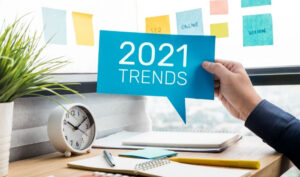
How to Develop Leadership Skills When Building Diverse Teams [Podcast]
At this point, it’s well known that building diverse teams of employees offers a competitive advantage to organizations everywhere. It’s hard to argue with the

At this point, it’s well known that building diverse teams of employees offers a competitive advantage to organizations everywhere. It’s hard to argue with the

As human rights activist and businesswoman Anita Roddick once said, “Being good is good business.” Today, many working people seem to foster that belief. Seventy-five

The pandemic taught us a lot about ourselves. Like how many of us don’t need to go into an office to be productive. That flexibility

Eighty percent of employees say they want to work from home at least part-time. And three in four consider remote work the “new normal.” In

Most of us want to have a perfect business model out of the gate, but that’s a pie-in-the-sky attitude. As much as we all want

Salary isn’t everything. As a matter of fact, eighty percent of employees say that they’d choose additional benefits over a raise. Sixty percent say that

It’s irrefutable: Hybrid workplaces are in, and inflexible employers are out. The data is astounding. In some studies, 80 to 90 percent of employees report

The landscape of HR is rapidly changing, especially due to the pandemic. With WFH culture escalating and employee needs constantly shifting, HR professionals need to

Ever get that blah feeling? That surge of listlessness you can’t explain? The thing that keeps you in bed watching Buffy the Vampire Slayer until

The talent cliff is a phenomenon where businesses lose employees at a rapid rate. It isn’t a new problem, but it regularly appears in times

Employee burnout is real. According to a Gallup poll, a staggering 76% of employees experience some form of burnout in their careers. In a survey

As we start to put the crushing impact of the pandemic behind us, businesses — and the talent acquisition function of HR in particular —

Thus far into the COVID-19 crisis, mental health and well-being have dropped a staggering 33 percent. As a result, many employees are no longer content

A recent analysis by McKinsey found that the pandemic has transformed how we work for good. Yes, some of us will return to the workplace.

Few global events have dramatically transformed the world of work as the COVID-19 crisis. Perhaps the most critical issue to the modern workforce, its impact

Since the coronavirus pandemic began, one question has been on everyone’s minds: When can we go back to normal? Of course, many areas are seeing

For more than a year now, many of us have been enjoying our work at home experience. On the surface, this has been an opportunity

The pandemic has altered almost every aspect of our lives. It has exposed fault lines in our country, workplaces, and at home. Many of us

In the world of work, we tend to be tolerant — perhaps overly tolerant — of failure. Of course, no business sets out to fail.

Disruption is constant; by definition, it drives in business reinvention — and never more than it has over the past year. And yet, some companies

The tsunami of turmoil that started in 2020 has continued wreaking havoc in 2021. Over the past year, the accompanying stress and uncertainty have taken

Women in the workforce have always faced a lack of upward mobility, unequal pay, and suppression of our talent in the workplace. Now, let’s add

Many members of the 70 million-strong Baby Boomer generation are at prime caregiving age, and soon many will become care recipients themselves. While they will

Emotional intelligence, or EQ, has been a regular topic in the workplace for some time now. And yet, in these uncertain times — and while

We’ve recently come to understand how diversity affects us all — in society and the workplace. But there are forms of diversity we don’t talk